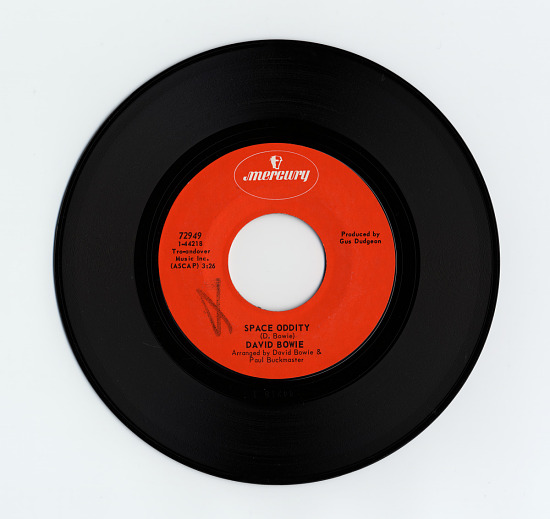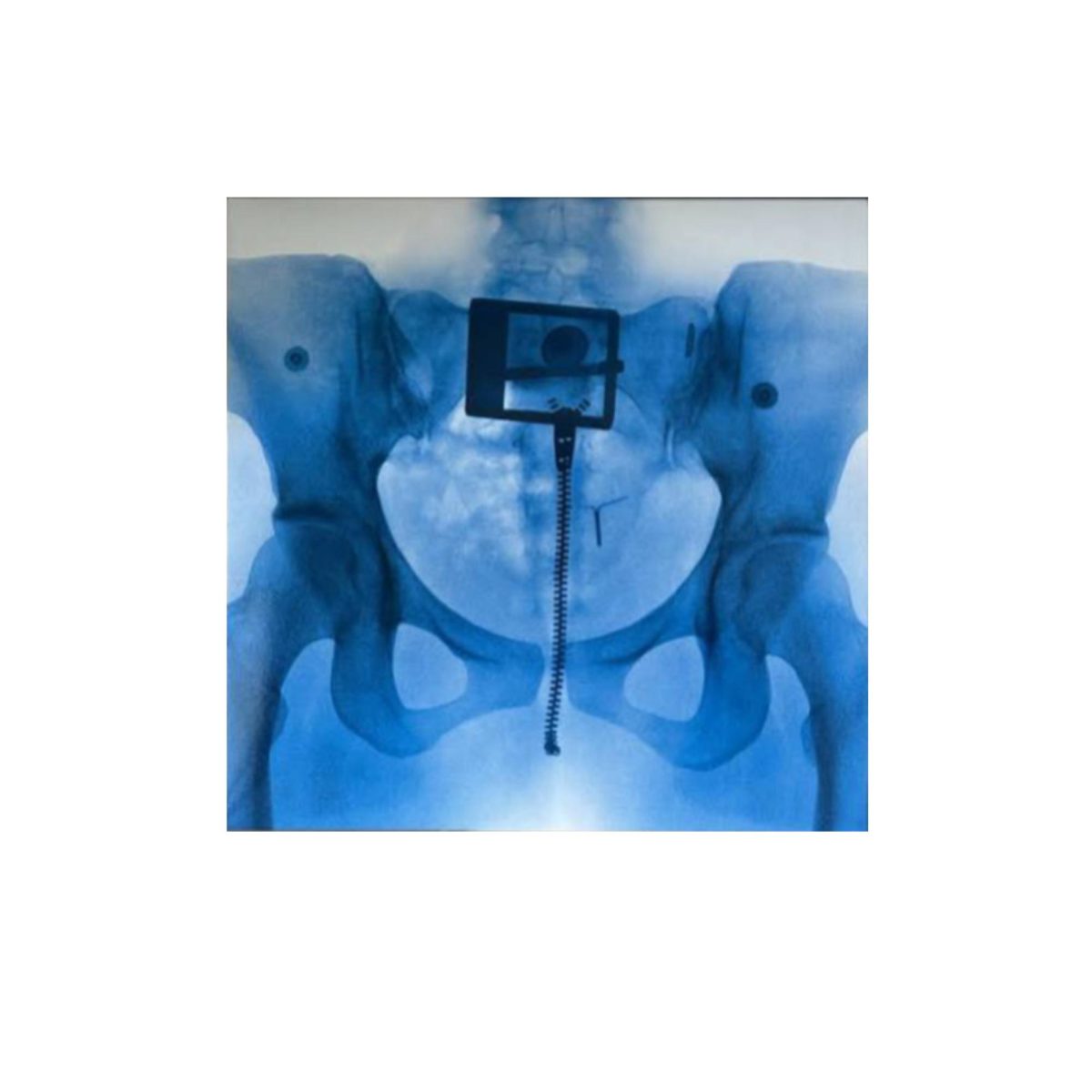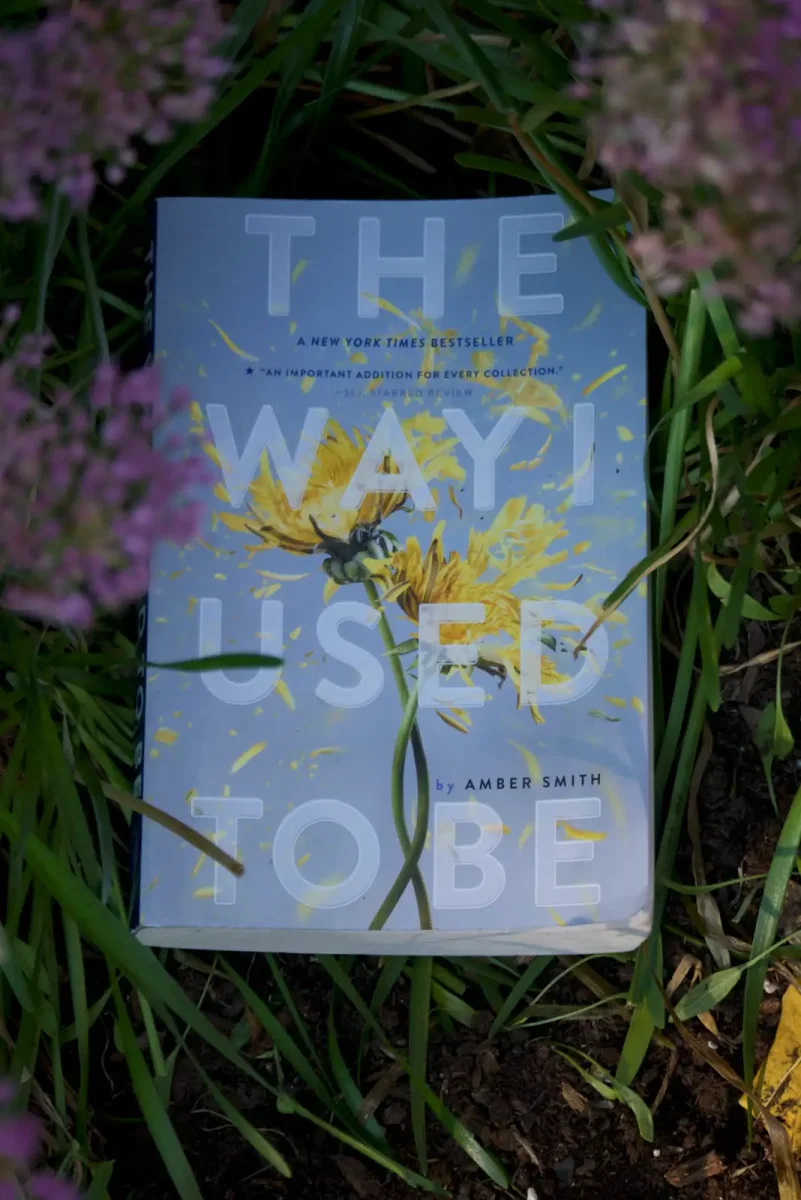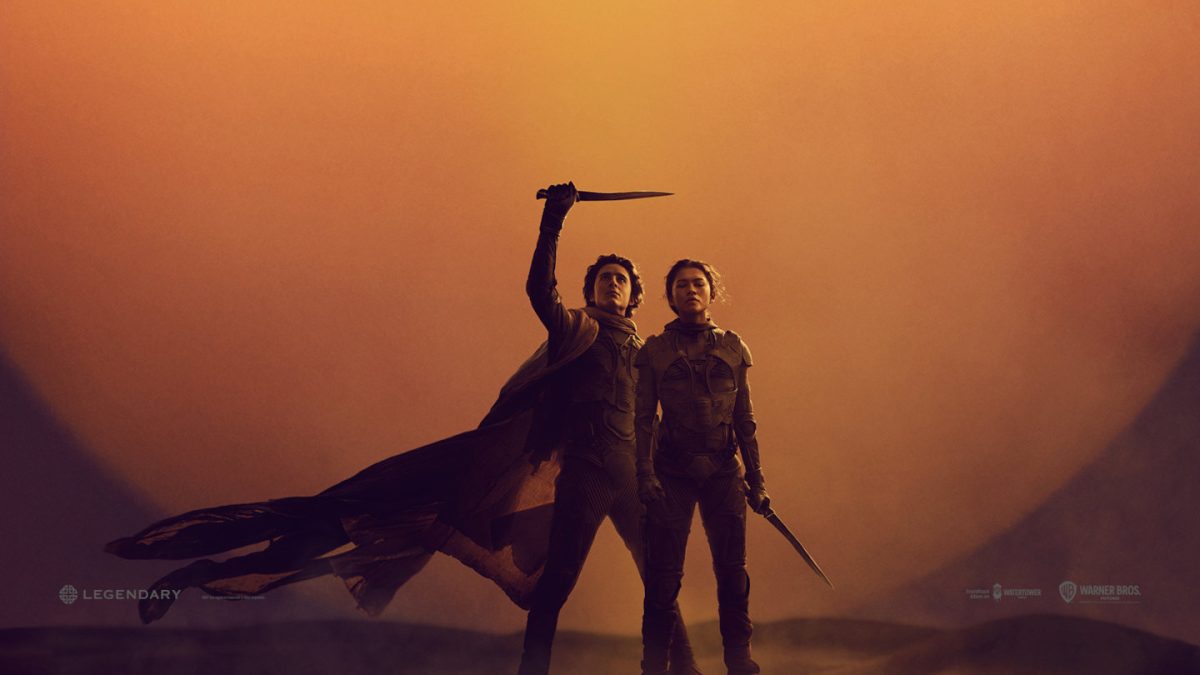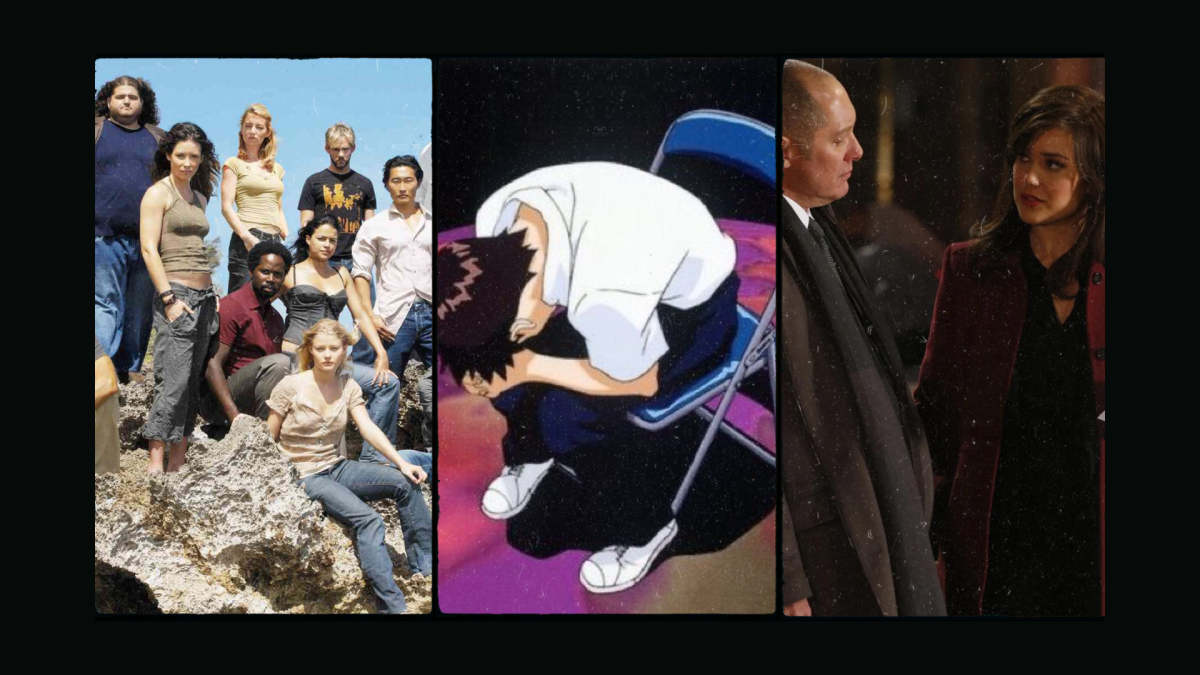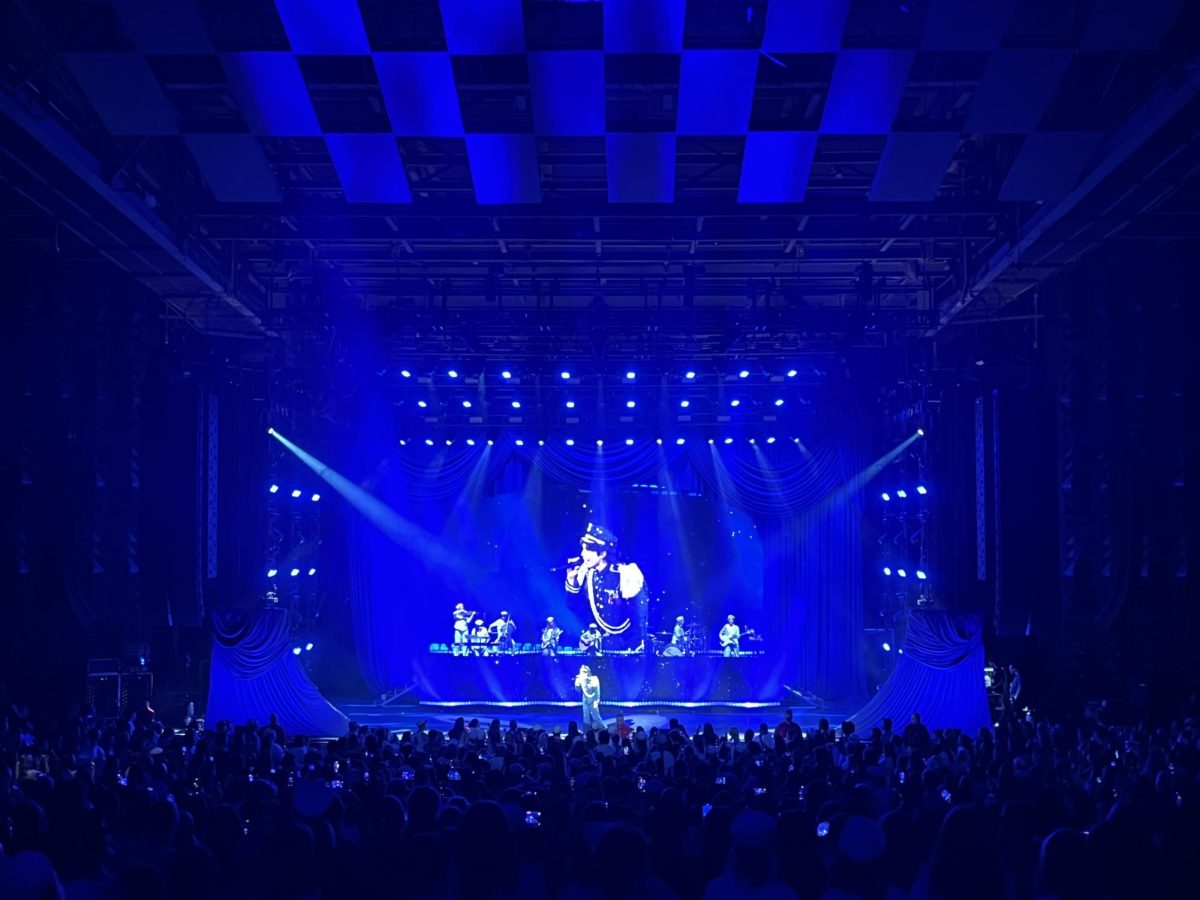Whether it’s in Halloween costumes or internet culture, The Dare has become a fixture in the public’s imagination. The face of Harrison Patrick Smith donning sunglasses is seen with current pop sensations such as Charli XCX and Billie Eilish. He achieved chart success with the song “Guess,” which showcased his production skills and featured two popular singers. His reign of the New York’s club scene with his DJ sets called Freakquencies recently just went on tour cross-country. The Dare’s abrasive synths and sardonic tone fill the caricature created through each song in his new album, “What’s Wrong With New York?”
The first track under his artist name, “Girls,” released in 2023, rose on the internet through Tik Tok. Its flagrant acceptance of women’s rights and wrongs debatably. It’s raunchy and unapologetic in its lyrics. His crass voice becomes a figure of this identity he takes a hold of – the sleek, suit-wearing man at the turntable. It’s a self-aware earworm of a track that succeeded in getting into everyone’s head. The lyrics verge on songs like Drunk Girls by electronic predecessor, LCD Soundsystem.
“Girls,” later released through The Dares first EP, bluntly titled” The Sex EP,” consists of songs that would also later be on his first album. One that could be considered audibly his most concise being “Good Time.” Its club music intent is clear in its crowded, revving synths towards its chorus. Its sleazy, exclusive lyrics fill the track to a nearly overwhelming extent. His vocalizations transform into a nearly robotic state, perfectly matching the earworm-like musicality of his prior song, as the lyrics repeat, “I got no money, you got no money, we got a good time.”
“Sex,” a song that aptly matches its similarly titled “The Sex EP,” builds up to a French EDM style beat after a rather disinteresting opening. Though its latter half re-invokes the club style intended, the build sometimes feels slow enough to be a parody of other overtly hedonist tracks. But it lacks the catchy tunes of ridiculous electronic tracks in 90s Eurodance of La Bouche’s “Be My Lover” or Right Said Fred’s satirically masculine hit of “I’m Too Sexy.” The last on the EP, “Bloodwork,” is entirely instrumental. It’s industrial and tense, but feels more like filler in comparison to the rest.
“Perfume,” his first music video off the album, emulates 90s Calvin Klein advertisements. Entirely in black and white, a single white room lined with Marshall speakers in the back. It shows a cleverly titled “Le Dare” perfume full of sleazily dressed models. We live in a post-ironic time, a muddled line between both ironic and genuine; every word The Dare speaks proves that. The track is layered with mouth-watering synths and even adds on a catchy guitar riff and cowbell.
In “I Destroyed Disco,” he states, “What’s a blogger to a rocker? What’s a rocker to The Dare?” putting down claims of copying iconic late 2000s into early 2010s indie sleaze scenes of the early internet and electroclash icons. such as Brooklyn electronic rock band LCD Soundsystem or even uncle-nephew electronic LMFAO (of “Party Rock Anthem” fame). There can be countless bloggers and rockers worldwide, but there will only be one edition of The Dare in 2024.
The album itself has a few highlights outside of its singles and EP, “All Night and You’re Invited,” come to mind. Though in a way, its later tracks feel more shallow, a filler and a replica of the late 2000s hype of recession pop nearly forcing us to be happy during what felt like a tragic time. Though that’s not much different from the Indie Sleaze era that The Dare is chronically referencing.
Indie sleaze, a common subject of conversation placed next to the dare, was debatably made by several important factors: the rebirth of New York’s indie rock scene and several models from the U.K. thus adopting it. It was a cultural want of nostalgia for the analog, intellectualism that recession-era pop thrust the pop culture away from. The Velvet Underground, CBGB inspired it and even the more distinctly grimier, unestablished electronica of 1980s clubs. It was all about a curation of authenticity, gentrifying communities complaining about how their cities felt inhuman, wanting to bring back that grim and Dionysian origin of clubbing. It was often critiqued for glorifying an intensely self-decimating debauchery. Many contribute to the fall of early internet cultures, much like indie sleaze to the downfall of Myspace and a growing popularity for minimal tropic beats and a hatred for party culture. Though as of 2021, since the pandemic had ended, the national need for a club-life attitude had returned. It’s mutually as desperate as it was during the 2008 recession.
With remarkable highs and lows, this album reintroduces the thrilling noise of pop music. Its lyrics remain somewhat irrelevant to the purpose at hand. This is not supposed to be deep. This is just as ironic as the club hits of post-ironic hyper-pop during the pandemic with a new twist. It is an accepted welcome back for many but brings a tinge of worry with its lack of substance in its later songs. It profits off of the nostalgia of LMFAO and Kesha, when she still had the dollar sign in her name. While there is now just one version of The Dare, less than two decades ago, there could have been a surplus of him in a room.




